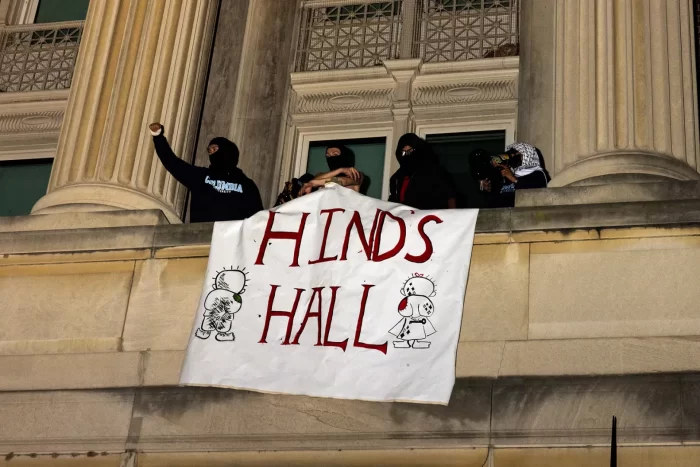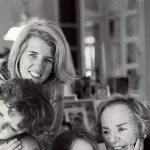Hundreds of police officers entered the campus of Columbia University this week, arresting multiple student protesters who had barricaded themselves inside a campus building to demonstrate against Israel’s military actions in Gaza. The raid marked a dramatic escalation in a wave of campus protests that have spread across universities nationwide. In this article we talk about Columbia Students Occupy Building in Protest – What’s the Next Move?
The Columbia protests began on April 17th, with students erecting tents on campus grounds in solidarity with Palestinians killed and displaced by Israeli airstrikes on Gaza. Over the last month, more than 1,000 protesters have been arrested at demonstrations on campuses from California to Massachusetts. The Columbia occupation brought police intervention for the first time.
Occupation Follows Months of Campus Activism
The occupation came after Columbia administrators threatened disciplinary actions against rally participants if they did not leave campus by a specific deadline. In response, a group of students took over Hamilton Hall, an administrative building, early Tuesday morning.
“We renamed the building ‘Hind’s Hall’, in memory of six-year-old Palestinian girl Hind Rajab who was killed in Gaza in February,” said protest leader Mahmoud Khalil, a Palestinian student at Columbia’s School of International and Public Affairs.
The students barricaded building entrances and covered windows with pro-Palestinian signs. They demanded Columbia divest from Israel, reveal financial ties, and grant amnesty to student protesters before they would leave the occupied hall.
Late Tuesday night, dozens of heavily equipped police officers entered campus on trucks and ladders, clearing protesters from Hamilton Hall. Videos showed multiple demonstrators taken away in handcuffs. Police arrested between 30-40 people, mostly students.
University Defends Police Intervention
Columbia administrators stated they reluctantly called police after facilities workers were threatened and public safety personnel forced from the building. A university spokesperson claimed “outside agitators” with no Columbia affiliation helped orchestrate the occupation.
Student organizers disputed these allegations. “They’re students,” said Khalil of the occupiers. Jewish Voice for Peace activist Cameron Jones also asserted the demonstrators were primarily Columbia students.
Jones said the raids will provoke “a large, large blowback” against Columbia’s leadership in coming weeks. Many students, faculty and alumni now demand President Manouche Shafik’s resignation over the administration’s response to the protests, Jones explained.
Nationwide Solidarity for Gaza Drives Campus Activism
The Columbia protests reflect surging campus activism nationwide in solidarity with Gaza as Israeli-Palestinian tensions escalate. Recent demonstrations have specifically centered on university investments in Israeli companies that protesters say enable human rights violations against Palestinians.
The campus protests erupted after an 11-day conflict in May 2021 between Israel and Hamas militant groups in Gaza. Hundreds of Palestinian civilians died from Israeli airstrikes in one of the deadliest flareups since 2014.
Ongoing tensions reignited this April when Israeli police clashed with Palestinians at the Al-Aqsa mosque compound in East Jerusalem, a site both Jews and Muslims consider sacred. This sparked expanded fighting that killed more than 30 Palestinians and injured hundreds in Gaza.
In response, pro-Palestinian campus protesters across the U.S. have organized rallies, die-ins, building occupations, hunger strikes, and walkouts. They demand colleges cut financial ties with Israel’s “apartheid” government and military contractors.
Widespread Arrests Fuel Free Speech Concerns
These demonstrations have often ended in mass arrests, raising free speech questions. Over 60 student protesters were arrested at the University of Texas at Austin on trespassing charges this May after a sit-in against Israel investments. Police also arrested 16 protesters at the University of New Mexico last week.
Such crackdowns only seemed to intensify protests. After arrests at the University of Massachusetts Amherst earlier this month, the campus rallies grew larger.
“Every time they try to silence us, we only get louder. We only bring larger numbers to our rallies, larger numbers to our protests,” said Jones of the Columbia occupation.
Other Universities Seek Peaceful Resolutions
While many universities called police to remove Gaza protesters from campus grounds, some have pursued diplomatic solutions.
This week, Brown University negotiated ending demonstration tents by promising student leaders a meeting with the Board of Trustees. If students can convince board members, Brown will vote on divesting endowment funds from Israel in October.
UC Berkeley also reached an agreement with pro-Palestinian groups to suspend disciplinary measures against protesters if demonstrations remain peaceful. Student organizers lauded the deal as a “huge win” for campus activism.
As the spring semester wraps up with graduation ceremonies, Columbia and other universities seek to restore calm after months of intensifying protests. But with no end in sight for Israeli-Palestinian conflicts abroad, campus activism seems poised to continue as students return to class in the fall.
The nonviolent Columbia occupation ended forcibly this May. But peaceful protest concessions at other universities suggest college administrations can reach solutions that both support free speech and campus order. I sincerely hope you find this “Columbia Students Occupy Building in Protest – What’s the Next Move?” article helpful.





